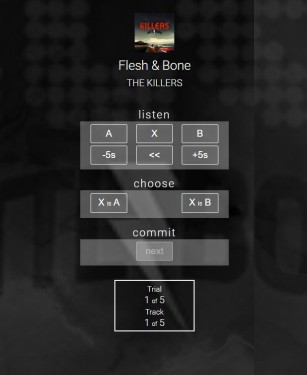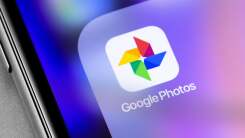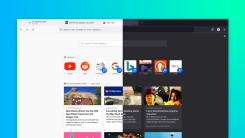How to Manage Your Google Photos or Move Them Somewhere Else
Now that Google will soon start counting anything you’ve uploaded to Google Photos toward your storage limit—which tops out at 15GB for a free plan—it

As one who likes to rock out, I confess, I was excited that my streaming service of choice—Spotify—announced it’s rolling out a new service tier for lossless audio streaming. Sure, it’ll cost more than what I’m paying now, but throwing away an expected $20 a month for perfect audio sounds pretty great, doesn’t it? My future road trips just got ten times better.
Maybe.
Here’s the thing. I wouldn’t pay a dime more for “enhanced audio” on any streaming service simply because the opportunity exists. At least, not without seeing whether I could tell the difference between the streaming service’s existing, high-quality offerings and its lossless offerings. I’m going to argue that most people probably wouldn’t be able to tell the difference in most cases—and I’m not the only one saying this.
As The Next Web’s Napier Lopes writes:
“Spotify Premium (the existing, $9.99 ad-free tier) already streams at a maximum of 320 kbps (256 kbps on the web) if you’ve
enabled this in the app’s settings
. Although at low bitrates the differences between lossy and lossless audio can be quite obvious, I’m willing to bet most people can’t tell apart a lossless file from a 256 kbps MP3 one — let alone a file compressed with the more modern Ogg codec that Spotify uses.
Our hearing is subject to a whole lot of placebo. Simply believing that a certain upgrade or key specification will make your speakers or headphones sound better is often more likely to cause to an ‘improvement’ than any actual change. Still, many golden-eared audiophiles will swear they can hear a difference without evidence.”
Since Spotify’s “HiFi” service won’t come out until later this year, you can’t test out its lossless streaming directly. However, it’s pretty easy to see whether you can tell the difference between audio files of different bitrates and compressions right now. Lopes recommends the Digital Feed ABX Test, which gives you two audio files—an “A” and “B” sample—as well as a target sample. Your job is to say whether A or B matches the target, and you can pick between a faster “can I tell lossy vs. lossless” test of five tracks, a ten-track test, or a mega-20-track test.
In other words, the test is checking to see if you can tell a difference between a lossless and a lossy version of a song. And if you think it’s going to be easy, well...here’s what the testing setup looks like when you go to use it:

You click on A, X, or B to start playing a track, and you can switch between the different versions by clicking A, X, or B all you want. Even then, I found it pretty difficult to tell the difference between the files in most situations. Either my hearing sucks, or it’s just really, really difficult to separate Spotify’s 320Kbps streaming—its highest quality—from a lossless file.
I won’t even show my results, because I was honestly just guessing most of the time. It’s plausible that my home audio setup—basically, a $150 pair of headphones plugged directly into my desktop PC’s motherboard—simply isn’t good enough to allow me to hear the difference between a high-quality and lossless file. But even on a more souped-up setup, it’s a tough test, as one Reddit user describes:
I did this test with LS50W in a treated room. I got around 65-70% correct. Thing is I REALLY had to focus hard, listening critically in a completely non-organic way. And I still got a high percentage wrong even at that. The difference was so negligible that I switched to Spotify from Tidal after I did that test. I haven’t looked back since.
If you’d like a more bare-bones quiz, NPR also published a similar study back in 2015 that you can use to test your ears. On this one, I did a great job of picking out the 320Kbps file. But the lossless file? Not so much.
And if you happen to have a lossy and lossless file of the same song, you can try this old-school trick to compare the differences between the two:
Regardless, I wouldn’t bother with a more-expensive “hifi” audio service if you can’t tell the difference between that and a streaming service’s “normal” offerings on whatever you have at home—your headphones, your speakers, or your ears. You’ll be spending money for a “benefit” you’ll never appreciate, and that seems silly.

Now that Google will soon start counting anything you’ve uploaded to Google Photos toward your storage limit—which tops out at 15GB for a free plan—it

It can be annoying to live the dual-platform life of macOS and Windows—or even just “Apple and everything that isn’t Apple.” But if you save your pass

In what is becoming a recurring ritual, Google has removed a scammy Android malware app from the Google Play Store. This time, the offending culprit i

The recent Firefox 89 update overhauls the browser’s desktop interface and introduces several welcome quality of life tweaks and expanded data privacy

Windows 11 was officially unveiled this week, and many eager users are checking to see if their PCs can run the upcoming OS with Microsoft’s Windows H

Are you tired of having to use boring touch controls to interact with your phone? After all, that’s the way things have been done on almost every smar

Someone recently broke into my car two nights in a row. The first time I figured it was a slip up on my end, and that I forgot to lock it after I got

We all know you don’t buy a Mac for gaming. Sure, it’s possible, but you don’t buy Apple exclusively to play games unless you only play Apple Arcade.
We are a comprehensive and trusted information platform dedicated to delivering high-quality content across a wide range of topics, including society, technology, business, health, culture, and entertainment.
From breaking news to in-depth reports, we adhere to the principles of accuracy and diverse perspectives, helping readers find clarity and reliability in today’s fast-paced information landscape.
Our goal is to be a dependable source of knowledge for every reader—making information not only accessible but truly trustworthy. Looking ahead, we will continue to enhance our content and services, connecting the world and delivering value.